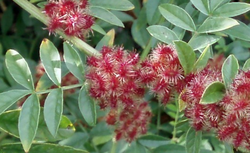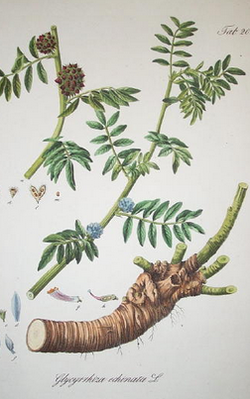 We can think of at least 180 great forest garden & perennial crops for cold climate Sweden. Want to hear about them? Over the course of the next year we will profile 5 a week on the blog. Perennial plants and crops offer a low energy, oil & resource input based foundation for future-proof agricultures. By default if an agriculture is to be called regenerative the bottom line is that it must be soil building, not soil depleting. Relentless deep tillage & poor soil husbandry (wifery?!) contributes to the majority of the 24 billion tons of topsoil lost every year on planet water. We are going to be focused on holistic polyculture grazing and perennial production at ridgedale over most of the site as this represents the most effective way to restore our degraded landscape, produce high value produce and ensure the future resource base we are managing holistically for in our decision making.  Genus Glycyrrhiza Species echinata Common Name Russian licorice Form herb Habit clumping Origin Europe Light sun Moisture mesic Edible Tea Nitrogen yes Groundcover yes Glycyrrhiza is a genus of about 18 accepted species in the legume family (Fabaceae), with a subcosmopolitan distribution in Asia, Australia, Europe, and the Americas. Root can be eaten raw or cooked. Very fibrous, it is often boiled to extract the sugars and is a source of Russian and German liquorice. It is used as a confection, a sweetener and medicinally. The dried root is often used for chewing, it is especially useful for teething children and as a tooth cleaner. The root contains glycyrrhizin, a substance that is 50 times sweeter than sugar. A tea made from the roots is an excellent thirst quencher. OUR FRIENDS AT PFAF HAVE AN AMAZING DATABASE OF SPECIES (UK BASED);
0 Comments
Leave a Reply. |
Details
Like us on FB Below for regular updatesStay up to date with customized updates you want to receive
Upcoming coursesArchives
December 2016
Categories
All
|

 RSS Feed
RSS Feed